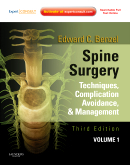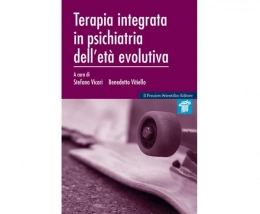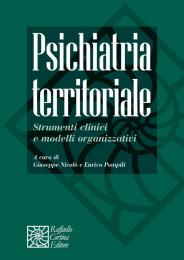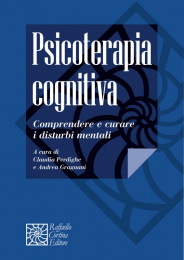Non ci sono recensioni
|
Build a solid foundation of knowledge based on the fundamentals and employ step-by-step instruction from Spine Surgery. Edited by Edward C. Benzel, this best-selling medical reference explores the full spectrum of surgical techniques used in spine surgery and delivers the comprehensive, cutting-edge guidance you need to achieve successful outcomes. Online access, thorough updates, contributions by leading international authorities, an abundance of detailed illustrations, and procedural video clips provide everything you need to avoid and manage complex problems. |
| Features: |
|
| New To This Edition: |
|
Table Of Contents:
SECTION 1 - HISTORY
1 - History
2 - History of Spine Instrumentation - The Modern Era
3 - History of Spine Biomechanics
SECTION 2 - THE FUNDAMENTALS
4 - Differential Diagnosis of Surgical Disorders of the Spine
5 - Functional Anatomy of the Spine
6 - Muscular Support of the Spine
7 - Anatomy and Physiology of Congenital Spinal Lesions
8 - Anatomy and Pathophysiology of Acquired Spinal Disorders
9 - Neural Injury at the Molecular Level
10 - Pathophysiology of Cervical Myelopathy: Biomechanics and Deformative Stress
11 - Anatomy of Nerve Root Compression, Nerve Root Tethering, and Spinal Instability
12 - Physical and Neurological Examination
13 - Intervertebral Disc Process of Degeneration: Physiology & Pathophysiology
14 - Definition and Assessment of Dysfunctional Segmented Motion
15 - Bone Modeling and Remodeling
16 - The Biology of Spine Fusion
17 - Spine Fusion: Anatomy and Biomechanics of the Bone-Bone Interface
18 - Bone Void Fillers: Bone and Bone Substitutes
19 - Osteointegration
20 - Materials and Material Properties
21 - Biomechanical Testing
22 - Computational Modeling of the Spine
23 - Intervertebral Disc: Anatomy, Physiology, and Aging
24 - Intradiscal Pressure
25 - Fundamentals of Spine Surgery
26 - Preoperative and Surgical Planning for Avoiding Complications
27 - Patient Selection for Spine Surgery
28 - Masqueraders of Spinal Pathology
29 - Data Management
30 - Practical Anatomy and Fundamental Biomechanics
31 - Applied Anatomy of the Cervical Spine
32 - Applied Anatomy of the Thoracic and Lumbar Spine
SECTION 3 - EXTRASPINAL Anatomy and Surgical Approaches and Exposures of the Vertebral Column
33 - Occipital-Cervical Region
34 - The Cervical Spine and Cervicothoracic Junction
35 - Extraspinal Anatomy and Surgical Approaches to Thoracic Spnie
36 - The Lumbar and Sacral Spine
SECTION 4 - Surgical Procedures
4.1 DECOMPRESSION AND ARTHRODESIS OF THE CERVICAL SPINE
37 - Upper Cervical and Craniocervical Decompression
38 - Upper Cervical and Occipitocervical Arthrodesis
39 - Ventral and Ventrolateral Subaxial Decompression
40 - Single and Multiple-Single Interbody Fusion Techniques
41 - Threaded Cylindrical Interbody Cage Fixation for Cervical Spondylosis and OPLL
42 - Cervical Interbody Strut Techniques
43 - Interbody Cages
44 - Cervical Laminectomy and Laminoforaminotomy
45 - Cervical Skip Corpectomy
46 - Cervical Laminoplasty
47 - Interspinous, Laminar, and Facet Fusion
48 - Combined Ventral-Dorsal Surgery
49 - Percutaneous and Minimally Invasive Approaches to Decompression & Arthrodesis of the Cervical Spine
4.2 DECOMPRESSION AND ARTHRODESIS OF THE THORACIC AND LUMBAR SPINE
50 - Ventral and Ventrolateral Spine Decompression and Fusion
51 - The Lateral Extracavitary Approach to the Thoracolumbar Spine
52 - Retropleural Approach to the Ventral Thoracic and Thoracolumbar Spine
53 - Laminotomy, Laminectomy, Laminoplasty, and Foraminotomy
54 - Posterior and Transforaminal Lumbar Interbody Fusion
55 - Anterior Lumbar Interbody Fusion
56 - Lumbar Interbody Cages
57 - Dorsal and Lateral Thoracic and Lumbar Fusion
58 - Indication for Spine Fusion for Axial Pain
59 - The Black Disc: Diagnosis and Treatment of Discogenic Back Pain
60 - Percutaneous and Minimally Invasive Approahes to Decompression and Arthodesis of the Thoraco- Lumbar Spine
61 - Thoracoscopic Corpectomy and Reconstruction
4.3 TRAUMA
62 - Classification of Thoracolumbar Spine Fractures
63 - Trauma Surgery: Occipito-Cervical Junction
64 - Subaxial Cervical Spine Injuries
65 - Trauma Surgery: Cervical Spine
66 - Trauma Surgery: Thoracic and Thoracolumbar Junction
67 - Trauma Surgery: Lumbar and Sacral Fractures
68 - Surgical Indications in Spine Trauma
69 - Non-Operative Management and Treatment of Spinal Injuries
70 - Medical Management of Adult and Pediatric Spinal Cord Injury
71 - Spinal Injuries in Sports
72 - Emerging Therapies for Spinal Cord Injury
73 - Penetrating Spinal Cord Injuries
74 - Timing of Surgery Following Spinal Cord Injury
75 - Evaluation of the Cervical Spine After Trauma
4.4 DISCECTOMY
76 - Cervical Discectomy
77 - Thoracic Discectomy
78 - Lumbar Discectomy
79 - Management of Soft Cervical Disc Herniation: Controversies and Complication Avoidance
80 - Recurrent Lumbar Disc Herniation
81 - Minimally Access and Percutaneous Lumbar Discectomy
4.5 ARTHRITIDES AND RELATED DISORDERS
82 - Cervical Spondylosis
83 - Thoracic and Lumbar Spondylosis
84 - Spondylolisthesis: Sagittal Plane Lumbar Spine Deformity Correction
85 - Degenerative Rotatory Scoliosis: Three-Dimensional Thoracic and Lumbar Spine Deformity Correction
86 - Rheumatoid Arthritis
87 - Ankylosing Spondylitis and Related Disorders
88 - Ossification of the Posterior Longitudinal Ligament
89 - Scheuermann’s Disease
90 - Spinal Deformity: Measuring, Defining, and Classifying
4.6 DEFORMITY CORRECTION PRINCIPLES AND TECHNIQUES
91 - Spine Deformity and Correction: The Fundamentals
92 - Craniocervical Junction Deformities
93 - Subaxial Cervical Deformities
94 - Cervical Facet Dislocations: A Ventral Surgical Strategy for Decompression, Reduction, and Stabilization
95 - Kyphotic Cervical Deformity
96 - Scoliotic Cervical Deformity
97 - Adult Thoracic and Lumbar Deformities
98 - An Approach for Treatment of Complex Adult Spinal Deformity
99 - Deformity Surgery for Ankylosing Spondylitis
100 - Pediatric Spinal Deformities and Deformity Correction
4.7 TUMORS, VASCULAR MALFORMATIONS, AND RELATED LESIONS
101 - Intramedullary Spinal Cord Lesions
102 - Intradural Extramedullary Spinal Lesions
103 - Spinal Intradural Vascular Malformations
104 - Spinal Dural Vascular Malformations
105 - Cauda Equina Syndrome
106 - Primary Bony Spinal Lesions
107 - Spondylectomy for Spinal Tumors
108 - Prognostic Factors, Surgical Outcomes, and Guidelines for Managing Metastatic Spinal Cancer
109 - Staging, Classification, and Oncologic Approaches for Metastic Tumors Involving the Spine
110 - Metabolic Bone Disease
111 - Tumors at the Foramen Magnum: Regional Challenges
112 - Cervio-Thoracic Junction Tumors: Regional Challenges
113 - Thoracic and Thoracolumbar Spinal Tumors: Regional Challenges
114 - Sacral Tumors: Regional Challenges
115 - Tarlov Cysts
4.8 PEDIATRIC SPINAL SURGERY AND RELATED CONDITIONS
116 - Occult Spinal Dysraphism and the Tethered Spinal Cord
117 - Myelomeningocele and Associated Anomalies
118 - Anterior Sacral Meningocele
119 - Chiari Malformation and Syringomyelia
120 - Chiari Malformation, Chronic Fatigue Syndrome, and Fibromyalgia: A Paradigm for Care
4.9 ADJUNCTIVE SURGICAL CONSIDERATIONS
121 - Omental Transposistion and Spine Surgery: Emphasis on Revascularization and Scar Prevention
122 - Wound Closure
123 - Bone Graft Harvesting
124 - Vascularized Bone Grafts in Spinal Surgery
125 - Pain and Spasticity
126 - Minimally Invasive Spinal Decompression and Stabilization Techniques I
127 - Minimally Invasive Spinal Decompression & Stabilization Techniques II: Thoracic and Lumbar Endoscopic Approaches
128 - Vertebroplasty and Kyphoplasty
129 - The Obese Patient
130 - Spine Surgery - Smoking and the Spine
131 - The Geriatric Patient
132 - Surgery of the Sympathetic Nervous System
133 - Arachnoiditis and Syringomyelia
134 - Post-traumatic and Idiopathic Syringomyelia
135 - Complications of Peripheral Nerve Surgery
SECTION 5 - Spinal Instrumentation
136 - Basic Biomechanically Relevant Anatomy
137 - Spinal Implant Attributes: Distraction, Compression, and Three-Point Bending
138 - Implant Attributes: Cantilever Beam Fixation
139 - Cervical Spine Fusion using Dynamic Ventral Cervical Plating
140 - Cervical Spine Construct Design
141 - Thoracic and Lumbar Spine Construct Design
142 - Upper Cervical Screw Fixation Techniques
143 - High Cervical and Occipitocervical Plate, Rod, Wire, and Bone Techniques
144 - Ventral Subaxial Cervical Fixation Techniques
145 - Subsidence and Dynamic Cervical Spine Stabilization
146 - Ventral and Lateral Thoracic and Lumbar Fixation Techniques
147 - Dorsal Subaxial Cervical Instrumentation Techniques
148 - Dorsal Thoracic and Lumbar Screw Fixation and Pedicle Fixation Techniques
149 - Dorsal Thoracic and Lumbar Simple Hook-Rod, Wire and Wire-Rod Techniques
150 - Dorsal Thoracic and Lumbar Universal Spinal Instrumentation Techniques
151 - Dorsal Thoracic and Lumbar Combined and Complex Techniques
152 - Complex Lumbosacropelvic Fixation Techniques
153 - Iatrogenic Spine Destabilization
154 - Lumbar Facet Fixation Techniques
155 - Para-coccygeal Trans-sacral Approach to the Lumbo-Sacral Junction for Interbody Fusion and Stabilization
SECTION 6 - MOTION PRESERVATION STRATEGIES
156 - To Not Operate
157 - Motion Sparing, Non-Implant Surgery: (A) Cervical Spine; (B) Lumbar Spine
158 - Adjacent Segment Degeneration & Disease of the Cervical and Lumbar Spine
159 - Biomechanics of Motion Preservation Techniques
160 - Cervical Total Disc Arthroplasty
161 - Lumbar Total Disc Arthroplasty
162 - Second Generation Total Disc Arthroplasty
163 - Nuclear Replacement
164 - Dorsal Dynamic Spine Stabilization
165 - Artificial Facet Joint
166 - Interspinous Bumpers
167 - Total Disc Arthroplasty - Associated Complications
168 - Explant Analysis of Wear, Degradation, and Fatigue in Motion Preserving Spinal Implants
SECTION 7 - ADJUNCTS TO SURGERY
169 - Surgical Incisions, Positioning, and Retraction
170 - Blood Loss
171 - Imaging: Trauma
172 - Degenerative Disease and Infection: Role of Imaging
173 - Overview of Imaging Procedures Available for Spinal Diagnosis
174 - Postoperative Imaging
175 - Intraoperative Imaging
176 - Stereotactic Radiosurgery for the Treatment of Spinal Metastases
177 - Somatosensory Evoked Potential for Spinal Surgery
178 - Electrodiagnostic Studies
179 - Intraoperative Nonparalytic Monitoring
SECTION 8 - NONSURGICAL MANAGEMENT
180 - Anesthesia
181 - Advances in Anesthesia for Spine Surgery and the Prevention of Complications
182 - Perioperative Management
183 - Medical Management of the Patient with Acute Spinal Cord Injury
184 - Nutritional Care of the Spinal Cord Injured Patient
185 - Skin and Wound Care
186 - Spinal Traction
187 - Orthoses: Complication Prevention and Management
188 - Medical Management of Neck and Low Back Pain
189 - Non-Operative Management of Neck and Back Pain
190 - Psychosocial Aspects and Work-related Issues Regarding Lumbar Degenerative Disc Disease
191 - Interventional Non-Operative Management of Neck and Back Pain
192 - Intradiscal Electrothermy
SECTION 9 - SPECIFIC COMPLICATIONS: AVOIDANCE AND MANAGEMENT
193 - Neurologic Complications of Common Spinal Operations
194 - Vascular and Soft-Tissue Complications
195 - Postoperative Spinal Deformities
196 - Arachnoiditis
197 - Spine Infection
198 - The Prevention of Operative Infections: An Evidence-based Approach
199 - Medical Complications
200 - Cerebrospinal Fluid Fistula and Pseudomeningocele After Spine Surgery
201 - Nonunion
202 - Spinal Reoperations
203 - Intraoperative Crisis Management in Spine Surgery: What to do When Things Go Bad
**THE FOLLOWING SECTIONS WILL ONLY BE ON-LINE AND NOT IN THE PRINTED TEXT**
SECTION 10 - POSTSCRIPT
204 - Ethical and Mediocolegal Aspects of Spinal Surgery
205 - Conflicts of Interest and Conflict Management
206 - Economics and Practice Management
207 - The Rationale for Practice Hygiene: Coding, Reimbursement, and Nomenclature
208 - Education of the Spine Surgeons
209 - Education and Knowledge-Base Acquisition and Retention
210 - The Art of the Clinical Trial
211 - The Meaningful Retrospective Analysis
212 - Art and Science of Guideline Formation
SECTION 11 - CONTROVERSIES
213 - Anterior Cervical Corpectomy and Fusion: To Plate or Not To Plate
To Not Plate
To Plate
214 - Cervical Spondylosis with Minimal Myelopathy: To Decompress or Not To Decompress
To Decompress
Not To Decompress
215 - Bilateral Locked Cervical Facets with Incomplete Myelopathy: Open Versus Closed Reduction
Open Reduction
Closed Reduction
216 - Cervical Spine Fusion: Allograft Versus Autograft
Argument for Allograft
Argument for Autograft
217 - Thoracic and Thoracolumbar Spine Fractures with Ventral Mass Lesion: Ventral Versus Dorsal
Operation
Ventral Decompression and Stabilization
Dorsal Decompression and Stabilization
218 - Reoperation for Failed Spinal Fusion: Augmentation of Fusion with Spinal Stimulation
Argument Against Bone Growth Stimulator
Argument for Bone Growth Stimulator
219 - Management of a Patient with Thoracolumbar Fracture with Complete Myelopathy and a 40° Kyphotic
Deformity: Operative or Recumbent Management
Operative Management
Recumbent Management
220 - Management of Symptomatic Osteoporotic Vertebral Compression
Vertebroplasty
Kyphoplasty
221 - Management of Ossification of Posterior Longitudinal Ligament
Cervical Laminoplasty - Open Door
Laminoplasty - French Door
Laminectomy
Ventral Approach: Smith-Robinson Approach
Ventral Approach: Open Window Corpectomy
222 - Spondylotic Myelopathy with Cervical Kyphotic Deformity
Ventral Approach
Dorsal Approach
Combined Ventral and Dorsal Approach
223 - Management of Cervical Disc Herniation
Dorsal Laminoforaminotomy Plus Discectomy
Ventral Cervical Discectomy and Fusion with Allograft or BMP and Plating
Anterior Cervical Discectomy and Fusion with Autograft and Without Plating
Anterior Cervical Discectomy with Artificial Disc
224 - Management of a 45-year old with Mechanical Low Back Pain and with or without L4/5 Spondylolisthesis and No Neurological Findings
Non-Operative Management
Spinal Fusion - Ventral Approach
Spinal Fusion - Dorsal Approach
Spinal Fusion - Dorsal & Ventral Approach
Total Disc Arthroplasty
Nuclear Replacement
225 - Management of Traumatic Unilateral Jumped Cervical Facet Joint Without Myelopathy
Closed Traction Reduction Then Surgery
Open Reduction
226 - Management of Traumatic Bilateral Jumped Cervical Facet Joints in a Patient with Incomplete Myelopathy
Closed Traction Reduction Then Surgery
Open Reduction
227 - Management of Traumatic Bilateral Jumped Cervical Facet Joints in a Patient with Complete Myelopathy
Closed Traction Reduction Then Surgery
Open Reduction
228 - Timing of Decompression Surgery for Traumatic Spinal Cord Injury in a Patient with an Incomplete Myelopathy
Postural Non-Operative Management
Emergent Surgery
Non-Emergent Surgery
229 - Timing of Decompression Surgery for Traumatic Spinal Cord Injury in a Patient with Complete Myelopathy
Postural Non-Operative Management
Emergent Surgery
Non-Emergent Surgery
230 - Medical Management of Acute Spinal Cord Injury
Administration of High-Dose Steroids
No Administration of Steroids
231 - Traumatic Central Cord Syndrome
Early Surgery
Delayed Surgery
232 - Cervical Disc Herniation with Radiculopathy
Anterior Cervical Discectomy with Interbody Fusion
Anterior Cervical Discectomy with Interbody Fusion with Plating
Anterior Cervical Discectomy with Artificial Disc Spacer
Anterior Cervical Discectomy without Fusion
(management of cervical disc herniation & cervical disc herniation with radiculopathy)
Laminoforaminotomy
233 - Traumatic Assymtomatic Vertebral Artery Injury Secondary to Facet Fracture Dislocation
Do Nothing
Endovascular Management
Medical (anticoagulation) Management
234 - Lumbar Fusion versus Total Disc Arthroplasty for Mechanical Low Back Pain
Fusion
Total Disc Arthroplasty




